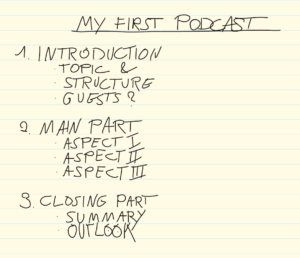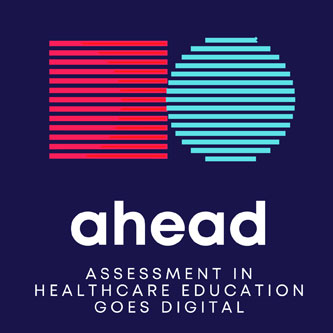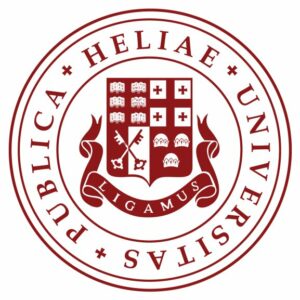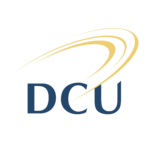Average Difficulty ***
Requirements
Laptop, PC, tablet or smartphone; software for audio post-production; hardware e.g. micophones
User Cases
Describe procedural sequences an process flows, describe procedural prozesses, present an discuss professional theories, discuss interdiciplinary discourses
Output
Podcast
Benefit
Skills in recording and cutting audios, uploading media on LMS, strucuring and creating content according to subject-specifing aspects
Introduction
Podcasts are becoming increasingly important in the educational world by providing a new and creative medium for knowledge transfer. Using podcasts as a form of assessment is an innovative approach that allows learners not only to demonstrate their learned knowledge, but also to improve their media literacy and creative skills. This method of assessment can be an effective way of assessing understanding and application of knowledge in a practical and interesting way.
Method
In a podcast as a form of assessment, learners create an audio recording in which they talk about a specific topic. This method involves aspects of self-directed learning as the learners have some control over the content and the way it is presented. It requires them to research the topic thoroughly, organise their thoughts clearly and develop a deep understanding of the topic. It also tests their ability to reflect critically, reason and communicate complex ideas in an understandable way.
Technical requirements
The technical requirements for a podcast are relatively low. Basically, learners need a device for audio recording, for example a smartphone, a tablet or a laptop. In addition, software is needed to record and edit audio. There are a number of free and paid options such as Audacity, GarageBand or Adobe Audition. A quiet recording location and possibly a simple microphone can improve the quality of the podcast, but are not essential. Podcasts are technically a combination of an audio file and an RSS (Really Simple Syndication) feed. The podcasters write a short description of the podcast or the respective episode for the RSS feed, which can then be read using a feed reader or in a podcatcher, such as iTunes or Google Podcasts. This practice goes back to the technical limitations of its time of origin. However, with today’s data rates, mp3 files can usually be transferred in real time without any problems, even on the move, so that streaming has become just as much an option as downloading.
Implementation
When implementing a podcast as a form of assessment, it is important to provide clear guidelines for learners. These could include the length of the podcast, the topics to be covered, the expected academic standards and the assessment criteria. It can be helpful to have learners work in groups to encourage collaboration and discussion. It is also advisable to allow learners time for rehearsal and feedback before the final recording. When conducting a podcast project as a form of assessment, either smaller or larger projects could be implemented. Small projects consist of single-track recordings with little or no editing and post-production. This type of project requires little technical expertise and can therefore be implemented quickly. It could be implemented, for example, in the form of a homework assignment to be handed in as an audio file or as part of (foreign) language teaching. Here, the focus is on the development of linguistic competences and, depending on the use, (self-)reflection. The promotion of media competences is rather secondary in such projects. In a larger project, a digital audio workstation (DAW) is used to record multiple tracks and bring in additional audio material. The focus here is on media literacy and aspects such as cooperation and self-organisation. For example, a series of podcasts could be created by a group of learners. In this context, topics such as publishing and related legalities could also be covered.
Suitable examination topics
In principle, a podcast can be used for a variety of exam topics. In the humanities, for example, learners could discuss a historical moment or a philosophical theory. In the sciences, they could explain a scientific phenomenon or theory. In social sciences, they could analyse a social problem or a political theory. Another interesting approach would be to allow learners to choose their own topics based on their interests and knowledge in order to foster motivation and engagement.
Script

A script for a podcast is a written document that provides a detailed description of what is supposed to happen in a particular podcast episode. This includes dialogues, instructions for sound recordings, description of sound effects and music, and even breaks for breathing or dramatic effects. A well-prepared script allows the speakers to communicate their thoughts and ideas clearly and effectively. For examination purposes, the script serves as a detailed template for the contents to be discussed in the podcast. It ensures that all required points are covered and helps to determine the flow and timing of the discussion. However, care should be taken to ensure that the script does not sound too mechanical or read off, to maintain the naturalness and authenticity of the podcast.





